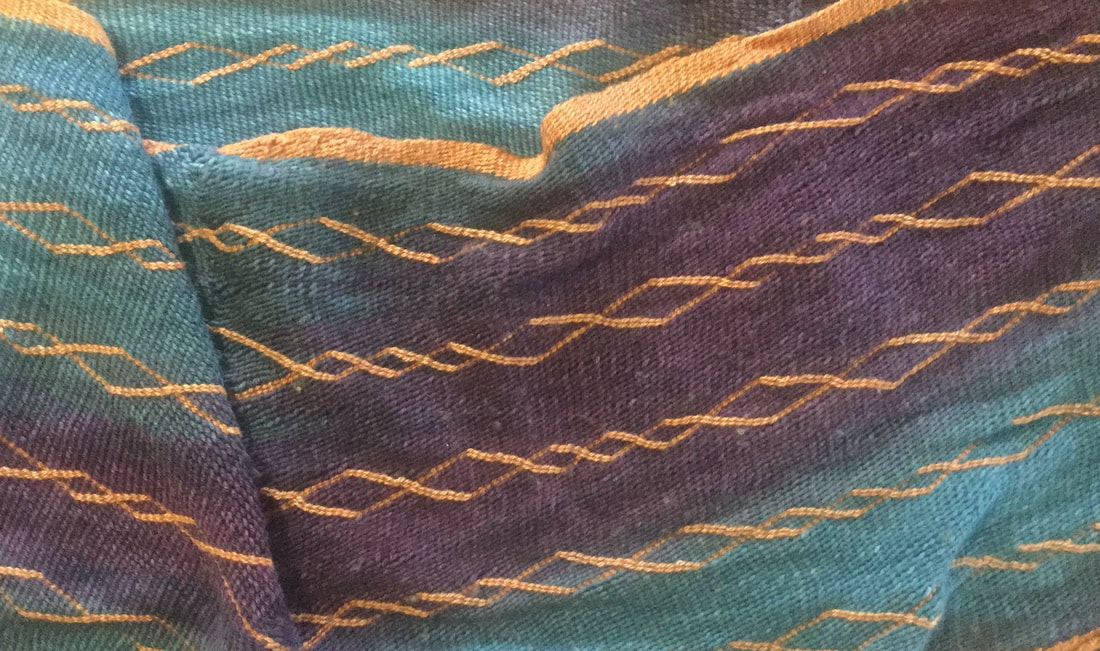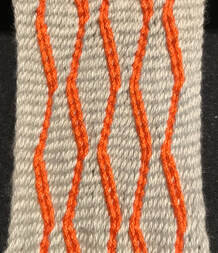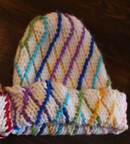November: Twining on a background of interlinking
|
Here is a written pattern for that motif,
updated twice on Nov 17, 2021. | ||
The twine-left stitch is always accompanied (preceded) by a fetch-a-friend stitch. There will be a lone, background-colored thread that should have a contrasting color partner. Instead of choosing that contrasting thread, you reach “between the legs” of the pair-that-will-twine, and choose the next available “back” background-colored thread. Bring that back thread to the right, to partner with that last-remaining-background-colored thread. Work a plain stitch on the two background-colored threads, and then work the contrasting color twining stitch. The contrasting color twined pair has now moved one thread to the left. That’s fetch-a-friend, and then twine-left.
To move the twined pairs to the right, you work the twined pair before the background-color plain stitch. To do this you need to situate that last-remaining-background-colored thread safely, in a position where he will “travel” through the legs of that pair that will twine. I place the traveler in-between two fingers of my left hand (index and middle finger) as “traveling position”. I then work the twining stitch, moving the twining pair one thread to the right. After the twine-right stitch, the traveling thread returns to “front” position, and you work that background-colored stitch normally. That’s twine-right and then a traveler stitch.
To move the twined pairs to the right, you work the twined pair before the background-color plain stitch. To do this you need to situate that last-remaining-background-colored thread safely, in a position where he will “travel” through the legs of that pair that will twine. I place the traveler in-between two fingers of my left hand (index and middle finger) as “traveling position”. I then work the twining stitch, moving the twining pair one thread to the right. After the twine-right stitch, the traveling thread returns to “front” position, and you work that background-colored stitch normally. That’s twine-right and then a traveler stitch.




